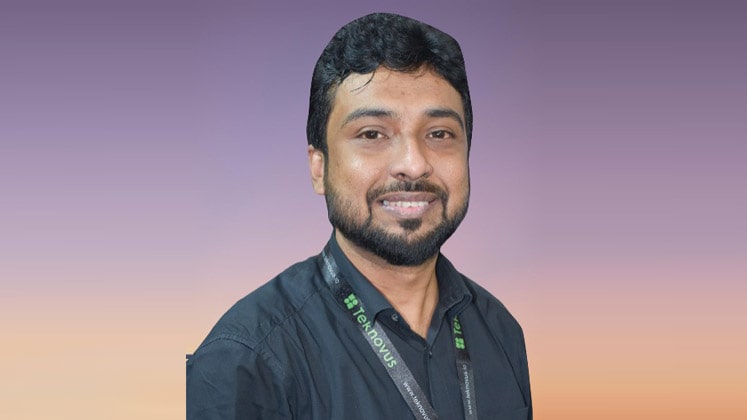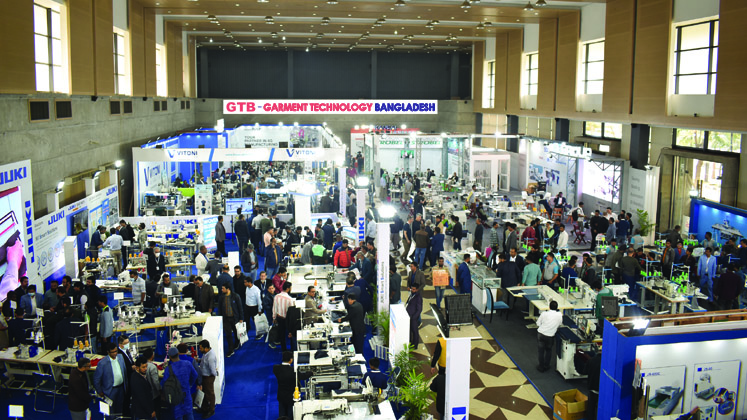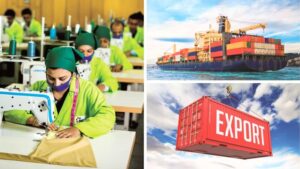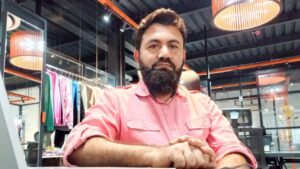Considered a major technology event of its kind in Bangladesh, Garment Technology Bangladesh (GTB) 2023, despite the two-year gap owing to Covid-19 pandemic, debuted with the same enthusiasm as it did last time around and it was evident from the number of visitors who thronged the event and a significant number of exhibitors who were at GTB 2023 to display their latest offerings.
The 2023’s expo had something for everyone and the event drew over 250 exhibitors and 13,220 visitors. Additionally, the 20th edition of Garment Technology Show Bangladesh (GTB) 2023; the 12th edition of International Garment Accessories & Packaging (GAP) Expo 2023 jointly organised with Bangladesh Garment Accessories Packaging Manufacturers & Exporters Association (BGAPMEA); the Maiden edition India Textile Trade Fair (ITTF) Bangladesh 2023 jointly organised with South Gujarat Chamber of Commerce & Industry (SGCCI) concurrent with International Yarn & Fabrics Expo was held under one platform in order to better serve the RMG industry’s need for sourcing opportunities.
Exhibitors showcase tech innovation and state-of-the-art machinery
Over 70+ companies and 250+ exhibitors, including some of the world’s leading manufacturers of garment machinery and equipment, were in attendance at the expo. The fair provided these companies with an opportunity to showcase their cutting-edge technologies and products and to meet with potential customers from Bangladesh’s booming garment industry. This year’s trade show featured a vast array of products and services, including machines for fabric cutting, sewing, printing and finishing; CAD/CAM software for garment design; unit production system and an assortment of additional tools and accessories such as felting needles, testing equipment, heat transfer equipment, folding machinery alongside chemicals and dyes etc.
According to the majority of technology providers, expansion is occurring rapidly for the large manufacturing units as well as for the smaller ones even if the approaches are different for both. The smaller ones are usually the ones who look for entry-level machines to get started with technology adoption whereas the big players look for comprehensive solutions. Companies like Guanki Automatic Sewing Machine, IMA, Prime Automation Limited and Winda Technologies Ltd., came with entry-level machines. While Winda Technologies had a series of auto cutters, single cutters and automatic spreading machines, IMA focused on cutting solutions.
The technology providers reported receiving many serious queries from those interested in learning more about how they could implement the displayed machine into their operations for better business growth.
“I think we did well at the fair because many people were interested in what we had to offer, and it was interesting to see so much in overall inclination towards automation,” Kabilen Sornum, Senior Manager Asia-Pacific, Groz-Beckert shared with Apparel Resources (AR).
Big names like IMB, Focus Garments, Robotech, Duerkopp Adler, Jack Technologies, Max Corporation, Vibemac, Juki, Brother, Pegasus, Gerber Technology, etc., all displayed products that catered to the growing trend of automation in Bangladesh apparel industry.
“The response was really good; our upgraded versions of machines really caught the attention of the industry players who also showed a keen interest to know more about new technologies and gain insights as to how they could improve efficiencies and decrease dependency on manpower through automation,” underlined Ali RezaZain, Sales Head of Vibemac.

Automation is the future, and this expo gave customers a good idea of why it is essential to automate the factory in order to concentrate on other vital topics, such as innovations. I believe that Bangladesh, as an industrial hub, has a great deal of potential. However, the country’s labour-intensive nature poses a challenge and can shift the focus away from adopting technology in every aspect. However, in light of recent developments, it is very important to adopt industrial 4.0 technologies for better productivity and efficiency” – Sourav Das, Director & CEO, Teknovus
The booth of H&H Asia Group Limited displaying the latest in the realm of ‘Bonding’, like hot airsealing machines, pneumatic flat cool with heat press machines, and pneumatic flat press machines, caught the attention of the visitors in particular.

“Stitch-free clothing is booming globally, in both the domestic and international markets, and it has been one of the key innovations when it comes to showcasing technology. We were able to answer a lot of questions and seal deals at the expo. The difficulty of implementing futuristic trends in manufacturing is growing rapidly today. In my opinion, the future lies in the production of fewer garments that require sewing, and we are already the first movers in the domain. Our constant research and innovations in our dedicated lab give us that extra edge in terms of innovation and offering the best,” stated Anshuman Dash, Founder of H&H Asia Group Ltd.
Sustainability in focus too
Sustainability was one of the prime focus areas for every company, most of which displayed a combination of smart and sustainable machines that helped in water and energy conservation, reducing wastage, increasing productivity, lowering costs and shortening production cycle.
The machines on display were all upgraded versions of the previous set where the focus was on tapping the trend of energy conservation with an enhanced overall productivity.

“Our focus this time was to make customers understand the importance of energy saving and how useful our new upgraded machines were for them. Our R&D back home has focused and is focusing to develop equipment that is sustainable in all aspects whether it is energy conservation or cost saving” – Foo Toon Pow, Focus Garment Tech Pte Ltd
In addition to state-of-the-art embroidery machines that can provide valuable data in real time, there were solutions for smart factories that are in line with industry 4.0, such as a real-time monitoring system that can tap the sustainability index and provide the results measuring energy conservation or a detailed report about waste output.
In addition to offering new solutions for efficiency and sustainability, many exhibitors demonstrated their use of AI (artificial intelligence) to improve quality control systems for textiles and clothing. AI could be the next step in automation and can make greater changes on how the industry operates and can lead to how technology has transformed the way garments are designed, manufactured and sold today. These AI-enabled machines evaluate each phase of a product’s lifecycle against predetermined criteria to ensure compliance with consumer safety regulations and international industry standards, therefore, ensuring streamlining of the waste and output to wheel in a sustainable method of producing garments.
The fabric, accessories and packaging segments left a great impression on the visitors
Bangladesh’s garment industry has traditionally relied on cotton-based garments, but with the rise in demand of MMF-based apparel, more Bangladeshi garment manufacturers are turning to MMF to produce higher-end, more valuable goods. In order to keep up with the times, the primary textile industry in Bangladesh is also undergoing significant change, with an increased focus on MMF.
Many of the leading spinners in Bangladesh are now reportedly setting up new facilities for manufacturing synthetic and blended yarns even as the global synthetic fibres market is expected to grow at a compound annual growth rate of 6.6 per cent from 2021 to 2028 while according to research (Grand View Research), the synthetic fibres market size will amount to US $ 99.78 billion by 2028.
Aligning with the needs, many Bangladeshi companies were able to network and explore untapped fabric and accessory markets at the event and many Bangladeshi buyers have been extremely satisfied with the quality of fabrics produced by manufacturers in Surat. Some fabrics at display were man-made, synthetic, natural and blended fibres in woven and knits for menswear, womenswear and kids wear as well as wool, polyester-wool, pure and blended linen, denims, cotton twills and drills etc. The SGCCI played a crucial role in increasing the level of economic cooperation between Bangladesh and India by connecting Bangladeshi businesses with Indian textile producers and facilitating partnerships between them at the expo.
“Bangladesh is the world’s second-largest exporter of apparel, bringing in around US $ 44 billion annually and spending about US $ 6 billion on raw materials like yarn and fabric imported from China and US $ 2 billion from India. Most of the imported yarn, cotton, knitted and woven fabric originated from Surat, therefore it seems to have a great opportunity to expand its role as a supplier of textile raw materials to Bangladesh,” said SGCCI President, Himanshu Bodawala.
The accessory makers also made their presence felt strongly
With 50+ exhibitors that displaced products like Fancy Lace, Zari Lace, Trimmings, Braids, Latkan Laces, Elastic Tapes, Covered Rubber Elastic Thread, Shoe Elastic Tapes, Jacquard Elastic Tapes, Polyester Rigio Tapes, etc., it was clearly a display of great workmanship and this can prove to be a marching sector for Bangladesh after garments. Buyers from all over the world are drawn to this market because of the abundance of reasonably priced options for accessories, trimmings and packaging.
The substantial number of domestic exhibitors, if at all, was an evidence of the maturing of accessory and packaging sub-sector with many new players taking to accessory making not only with a view to support the garment makers in the country but also to export overseas.
Sustainability plays a greater part in the accessory segment as well
It was also noticed that there had been an increased focus on sustainability in this segment as well with many exhibitors promoting eco-friendly materials and processes such as FSC-certified paper stocks, bio-degradable plastics and silicone prints, etc. Overall, it was a very successful trade show for accessory manufacturers, who are now better equipped to meet global demand due to their enhanced manufacturing capabilities having been able to cater to the local requirements substantially now. Suppliers are eager to explore new markets that will help them expand their businesses while continuing to offer quality services at competitive prices. Seeing the segment’s competitiveness and increasing number of members which stands today at 1800, BGPMEA is also in favour to provide the maximum support and assistance to the accessory makers to help them grow further.
Incidentally, Bangladesh garment accessory makers also provide employment opportunities for a large chunk of the local populace.
“The success of the Bangladesh garment industry is due in large part to the work done by the accessories and packaging industry, earlier Bangladesh used to import accessories from overseas but we have grown in the international medium and now we are going to be a big exporter in next five years,” claimed Mohammad Moazzem Hossain Moti, President (BGAPMEA).
This event also provided a platform for direct interaction between relevant stakeholders, to help develop new contacts for future business opportunities.
“Bangladesh is one of the markets in the world which has recovered quickly in post-pandemic. There have been some disruptions for sure due to the dollar crisis but the industry is quite optimistic about reaching US $ 100 billion apparel export target by 2030 and we are trying to play our role in helping the industry achieve its grand ambition,” said Nandgopal K, Director ASK Trade & Exhibitions Pvt. Ltd., while adding that both exhibitors and visitors were happy with GTB 2023 and everybody is eagerly awaiting for the Chittagong edition of the event, scheduled to be held in June this year.







